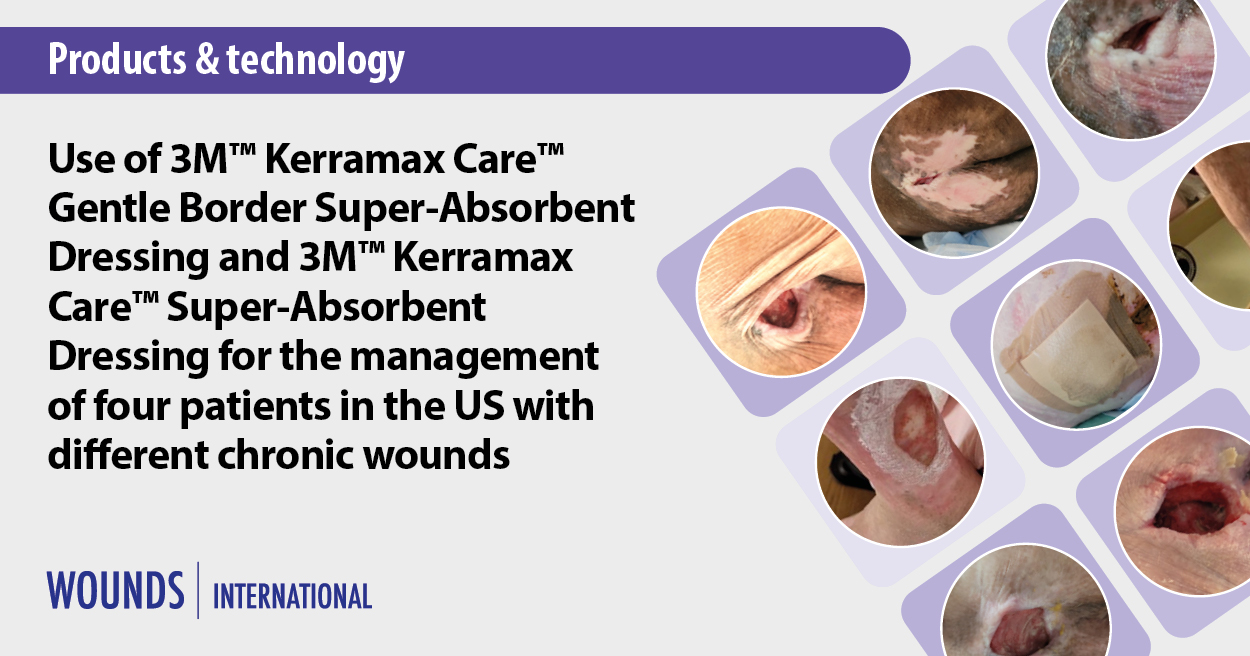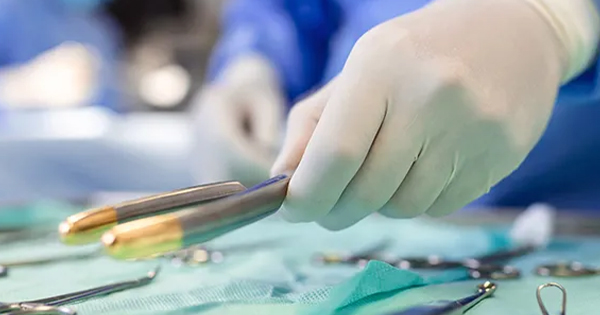Chronic wounds, such as pressure injuries, diabetic foot ulcers, venous leg ulcers and other lower limb ulcers, impact an estimated 1–2% of people during their lifetime (Järbrink et al, 2016). Complications associated with wound chronicity [see Box 1; Järbrink et al, 2016] increase both the personal and financial cost of wounds in terms of impact on quality of life and burden on the healthcare system.
Kerramax Care Dressings are suitable for use on exuding wounds, including pressure injuries, diabetic foot ulcers and venous leg ulcers and under all forms of compression; see Box 2 for further dressing properties.
Highly exuding wounds are demanding for both the clinician and patient and can lead to difficulties in achieving an optimal moisture balance. Additionally, they can cause issues such as leakage, which is uncomfortable and malodorous, as well as maceration of wound edges and surrounding skin (Wounds International, 2021). The constituents of wound fluid, including bacteria and matrix metalloproteinases, can be an impediment to wound healing (Wounds International, 2021).
Kerramax Care Dressings with advanced 3M™ Exu-Safe Technology have a unique, horizontal wicking layer and the ability to absorb and retain high levels of exudate and potentially harmful bacteria (e.g. methicillin-resistant Staphylococcus aureus (MRSA) and Pseudomonas aeruginosa) and matrix metalloproteinases inside the dressing.
Kerramax Care Dressings are available with a silicone border — 3M™ Kerramax Care™ Gentle Border Dressing [Figure 1a] is a primary or secondary dressing with a soft silicone border that ensures gentle adhesion and non-traumatic removal. The dressing can be secured in position without the need for a secondary dressing or retention bandage, and the heat-sealed border prevents exudate leakage from the dressing, thereby reducing the risk of maceration.
When choosing between a bordered or non-bordered dressing, it is necessary to consider factors such as wound type, location, patient condition and exudate level.
Kerramax Care Gentle Border Dressing can be particularly effective in areas where a dressing with no adhesive is more challenging to apply and where self-adhesive properties are needed (e.g. the torso and sacral area). The adhesive property can also help to provide good adhesion in areas with skin folds or uneven topography (e.g. ischial areas, breasts, pannus folds and gluteal cleft) while effectively managing wounds exposed to biomechanical stress or moisture. This type of dressing may allow patients to continue wearing their own clothes while ensuring the dressing remains in place, enabling them to carry on with their daily activities.
On the other hand, Kerramax Care Super-Absorbent Dressing [Figure 1b] can be effective when used under compression, helping clinicians determine when to change the compression wrap. Additionally, it may be a suitable option for patients with a history of repeated skin tears and medical adhesive-related skin injuries.
Cases
Four patients in the United States with different chronic wounds were treated with Kerramax Care Dressings for four weeks. Cases 1–3 used Kerramax Care Gentle Border Dressing, while Case 4 used Kerramax Care Super-Absorbent Dressing. Patients involved had previously received various treatment options, but lack of dressing adherence, frequent dressing changes and strikethrough/leakage remained a concern.
Download the full case studies below





